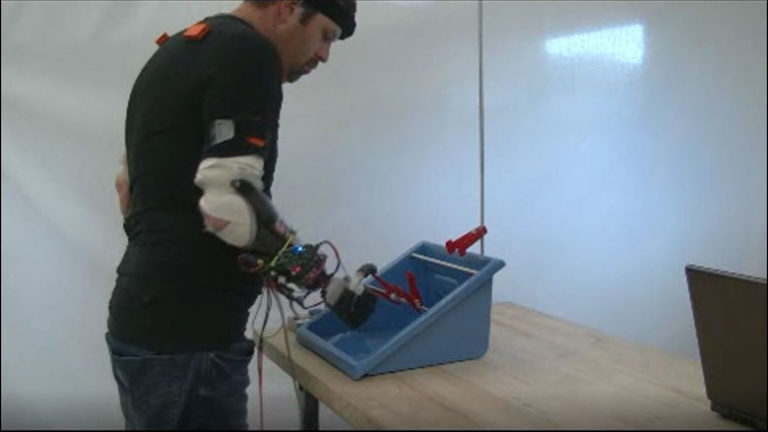This paper describes a control method intended to facilitate improved control of a myoelectric prosthesis containing a wrist rotator. Rather than exclusively utilize electromyogram (EMG) for the control of all myoelectric components (e.g., a hand and a wrist), the proposed controller utilizes inertial measurement (from 6-axis inertial measurement unit, or IMU) to sense upper arm ab/adduction, and uses this input to command a wrist rotation velocity. As such, the controller essentially substitutes shoulder ab/adduction in place of agonist/antagonist EMG to control wrist angular velocity, which preserves EMG for control of the hand (or other arm components). As a preliminary assessment of efficacy, the control method was implemented on a transradial prosthesis prototype with a powered wrist rotator and hand, and experimen-tally assessed on five able-bodied subjects who wore the prototype using an able-bodied adaptor and one transradial amputee subject while performing assessments representative of activities of daily living (ADLs). The assessments compared the (timed) perfor-mance of the combined EMG/IMU-based control method with a (conventional) sequential EMG control approach. Results of the assessment indicate that able-bodied subjects were able to perform the tasks 33% faster on average with the EMG/IMU-based method, relative to a conventional sequential EMG method. The same assessment was subsequently conducted using a single transradial amputee subject, which resulted in similar perfor-mance trends, although with a somewhat lessened effect size – spe-cifically, the amputee subject was on average 22% faster in per-forming tasks with the IMU-based controller.

